After draining the electrolytic solution it has been soaking in, the iron 4-pounder cannon recovered from the Storm Wreck is exposed for all to see. The solution needs to be periodically changed as it soaks up dissolved salts from the iron gun.
Yesterday our visitors got a special treat, as our Archaeological Conservator Starr Cox lead a team of interns and volunteers in the changing of the water from one of our two cannon vats. These two cannons were brought up by LAMP archaeologists almost one year ago, and have been undergoing treatment ever since. Take a look below the fold to read a bit about what it takes to conserve a 200 year old cannon completely saturated in seawater, and to see some photos from the water change.
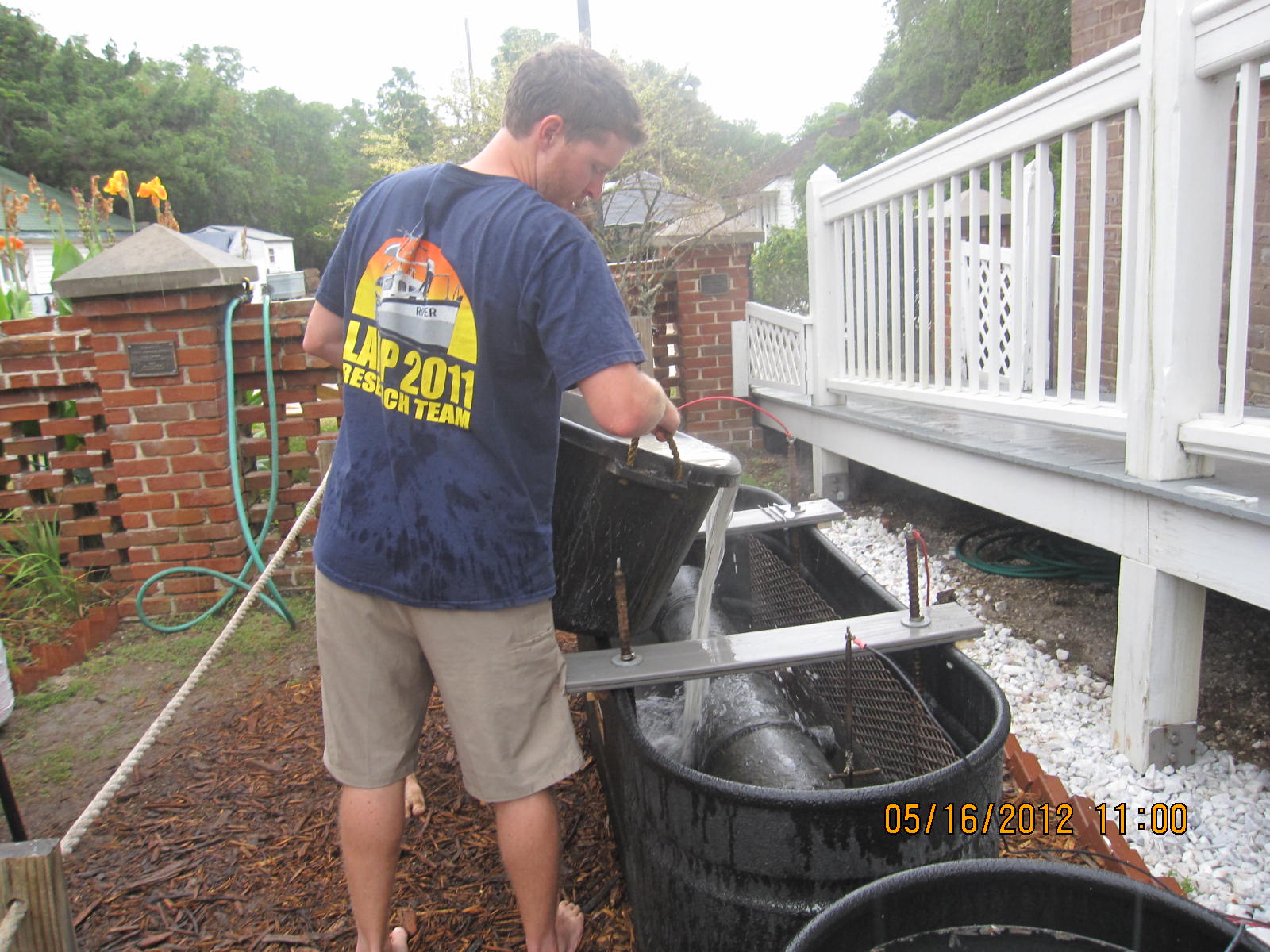
LAMP intern archaeologist Matt Hanks, a recent graduate of Flinders University’s program in maritime archaeology in South Australia, helps pour in the newly mixed solution of water and soda ash.
When first brought up these cannons were immediately placed in vats of water to keep them wet. If they had been allowed to dry out, then an accelerated and disasterous corrosion process would have begun. Instead, the guns stayed stable in their baths of water, which were periodically changed using clean water run through a reverse-osmosis system, so as to remove all salts present in St. Augustine city tap water. Once the concretion (encrustation) was removed with hammers and chisels, the cannons were finally visible in their original form (see also some videos here). It was then that we found our first date from the shipwreck, the year 1780.
Since that time, the two cannons have been undergoing electrolysis or electrolytic cleaning. This process involves running an electrical current through the guns while situated between sacrificial anodes in a solution of water and soda ash. This process effectively draws the salts from within the iron structure of the guns while still in solution. While we don’t normally think of iron as being porous, on a microscopic level the iron body of the gun is like a sponge, and it has been soaking up saltwater for the last two hundred years. If the salts were allowed to dry out (ie., if the cannon dried out), then they would crystallize and migrate outwards from the interior of the cannon, causing irreparable harm to the artifact, and destroying surface details such as the year cast into the smaller gun.
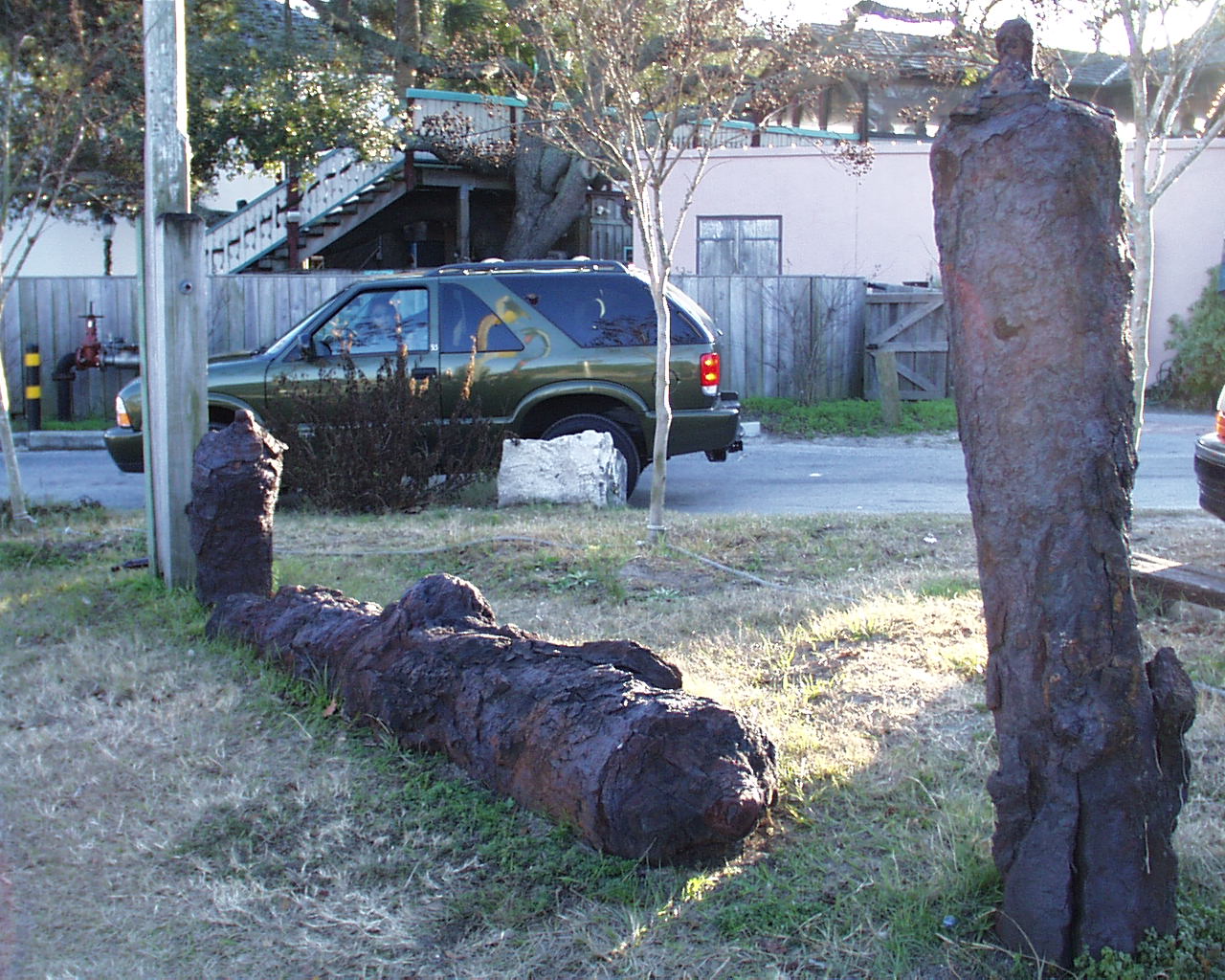
Three cannons that were dried out after recovery from the sea, with no conservation treatment conducted. They are heavily deteriorated and all original surface markings (weight, year, etc.) are forever lost. Most of the original metal has completely fallen off in large chunks and rusty dust. These guns were not recovered by archaeologists and for many years were displayed on the side of the road across from the Castillo de San Marcos.
This will not happen to our cannons! They are constantly undergoing electrical cleaning, day and night, and every week a LAMP technician tests the water solution they are soaking in to calculate salt content. We can watch the concentration of salt in the water increase as it is forced out of the cannons and into the solution. Once this level stops rising, and plateaus, then the water has become saturated with salt and it must be drained and replaced. That is what we were doing yesterday for the long gun. The smaller gun still needs more soak time.
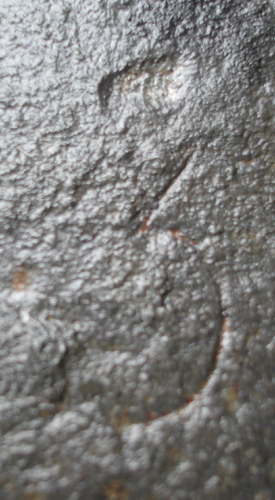
The number “3” is visible on the surface of the gun, near its breech, now that it has undergone cleaning for over half a year. More numbers may become visible after continued electrolytic cleaning.
When the water is drained, Starr took some time to inspect the gun. We have discerned what appears to be the number “3” inscribed or cast into the gun near its breech. There are probably more numbers that will become visible after more electrolytic cleaning, which not only removes salts but loosens and removes bits of encrustation that couldn’t be physically cleaned off with chisels.
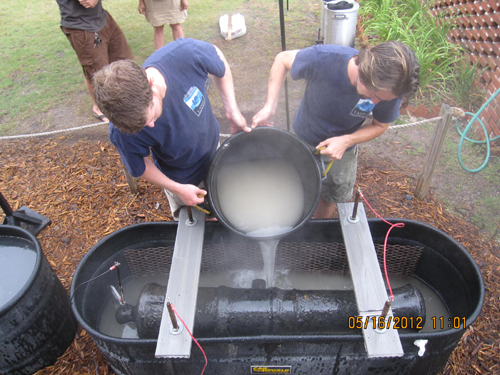
Matt Hanks and volunteer Brian McNamara pour a freshly mixed batch of soda ash and water, heated to facilitate the mixing, into the cannon vat.
Meanwhile, our volunteers and interns began to mix batches of solution, consisting of water with an 8 to 10% solution of soda ash. This mixture enables the electrolytic cleaning. We mix the batches one pot at a time, and heat the pot over a turkey frier because the chemical mixes into the water faster when the water is hot. Its a bit of a tricky operation, as we have to be careful around the boiling water, but it doesn’t take too long and soon the gun is safe in a new vatful of solution.
The entire electrolysis process can take up to several years, as much as two or even four! There will be many more water changes before the end, and each time the guns will be a little bit cleaner. Stay tuned for the latest updates regarding our cannons and other artifacts.
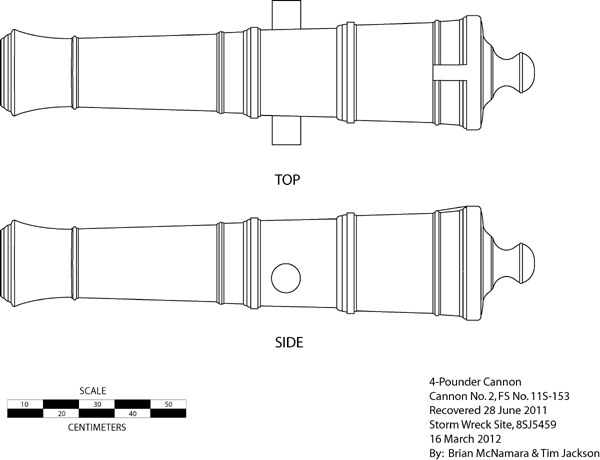
The archaeological drawing of the 4-pounder long gun, completed after the removal of encrustation. This cannon fired a 4 pound cannonball.

